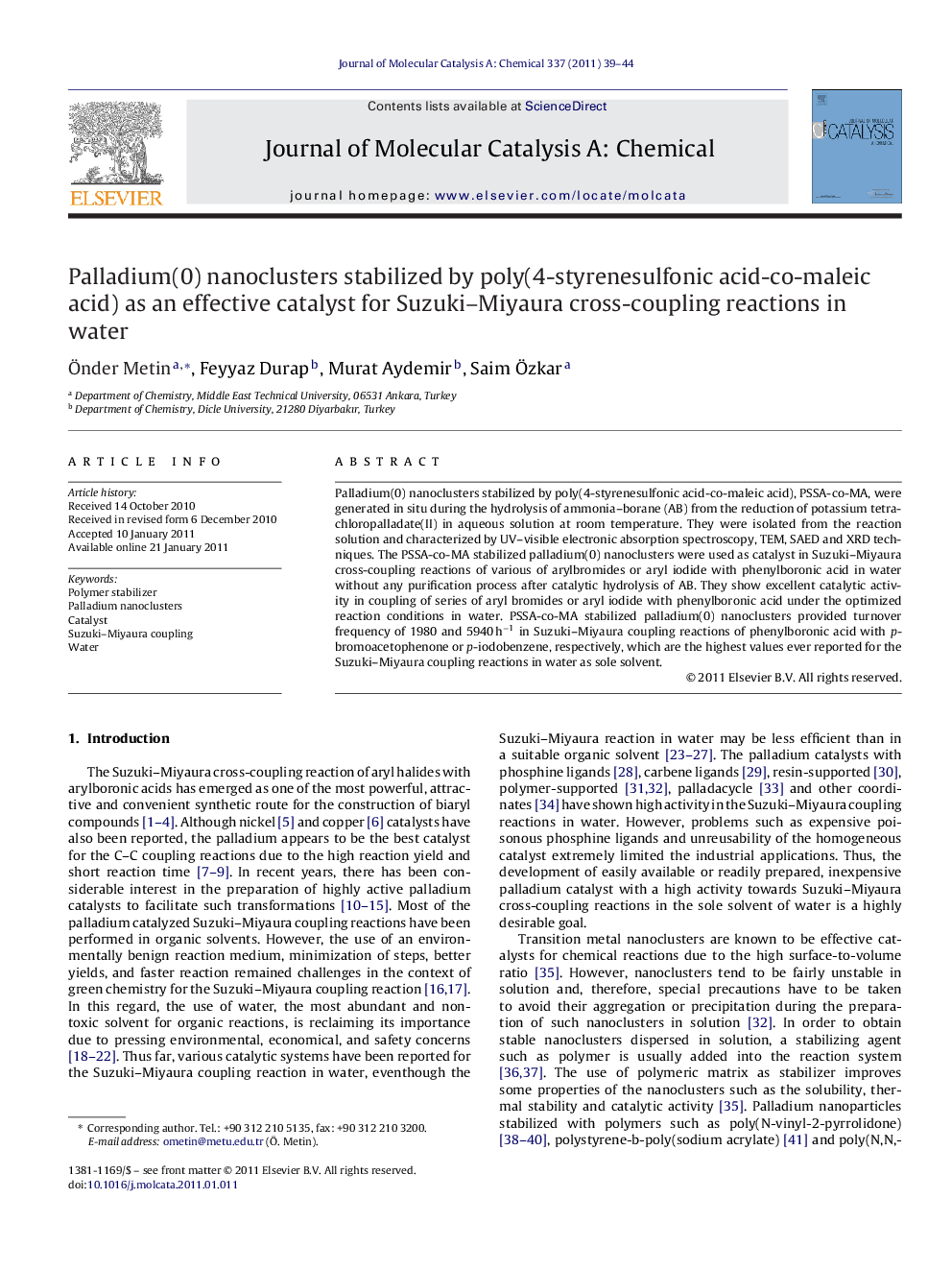| Article ID | Journal | Published Year | Pages | File Type |
|---|---|---|---|---|
| 66485 | Journal of Molecular Catalysis A: Chemical | 2011 | 6 Pages |
Palladium(0) nanoclusters stabilized by poly(4-styrenesulfonic acid-co-maleic acid), PSSA-co-MA, were generated in situ during the hydrolysis of ammonia–borane (AB) from the reduction of potassium tetrachloropalladate(II) in aqueous solution at room temperature. They were isolated from the reaction solution and characterized by UV–visible electronic absorption spectroscopy, TEM, SAED and XRD techniques. The PSSA-co-MA stabilized palladium(0) nanoclusters were used as catalyst in Suzuki–Miyaura cross-coupling reactions of various of arylbromides or aryl iodide with phenylboronic acid in water without any purification process after catalytic hydrolysis of AB. They show excellent catalytic activity in coupling of series of aryl bromides or aryl iodide with phenylboronic acid under the optimized reaction conditions in water. PSSA-co-MA stabilized palladium(0) nanoclusters provided turnover frequency of 1980 and 5940 h−1 in Suzuki–Miyaura coupling reactions of phenylboronic acid with p-bromoacetophenone or p-iodobenzene, respectively, which are the highest values ever reported for the Suzuki–Miyaura coupling reactions in water as sole solvent.
Graphical abstractFigure optionsDownload full-size imageDownload high-quality image (119 K)Download as PowerPoint slideResearch highlights► A simple method for well-defined polymer stabilized palladium(0) nanoclusters. ► Excellent catalytic activity in coupling of aryl bromides with phenylboronic acid. ► A recyclable catalyst for the Suzuki coupling reaction in water. ► Highly efficient Suzuki coupling reactions in water under moderate conditions.
